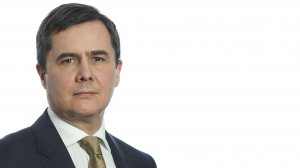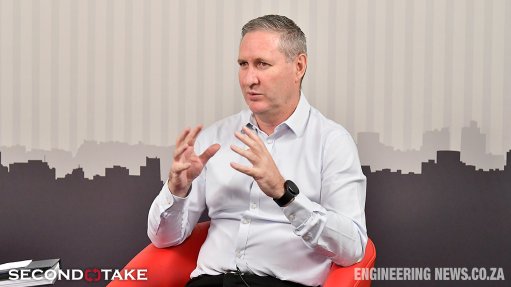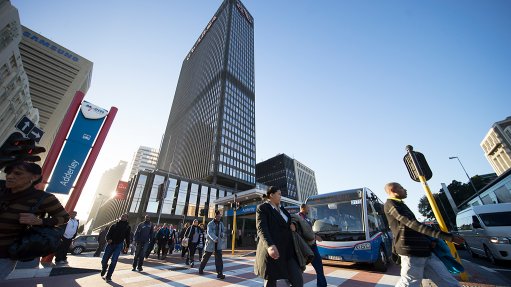Net zero gold a ‘realistic prospect’ – WGC

World Gold Council's John Mulligan gives an overview of how a pathway to net zero gold is possible. Video: Creamer Media's Kutlwano Matalala. Editing: Creamer Media's Nicholas Boyd.
The increased accessibility of means to further decarbonise electricity is creating an opportunity for gold to move towards carbon neutrality and makes net zero gold "a realistic prospect", World Gold Council (WGC) market relations director and climate change lead John Mulligan said during the Energy & Mines Africa virtual summit on May 6.
This, he noted, was owing to the majority of the yellow metal’s carbon footprint being the result of the mining process, which comprises a vast majority of emissions that are associated with the use of electricity, either generated on site or bought from the grid.
A comprehensive picture of gold’s carbon footprint has allowed the council to map out a high-level pathway to net zero in accordance with the Paris Agreement climate targets, which Mulligan said assisted the WGC in “analysing what that pathway might mean in terms of its feasibility, cost effectiveness and its practicality on the ground”.
“Our quantification of gold’s carbon footprint has been calculated to be around 126-million tonnes of carbon dioxide (CO2) or CO2-equivalent emissions a year,” Mulligan noted, adding that, for methodological reasons and the need to scale up and be as comprehensive as possible, “the numbers may be an overstatement of the overall carbon footprint” of the gold industry.
Though, by being comprehensive and taking the “big picture view”, the WGC has drilled down into where gold’s emissions are specifically generated, enabling it to look at the implications of some of these sources (like electricity) and how these may be changed by future actions to decarbonise.
“Quite significantly, recent research by the WGC indicates that the low hanging fruit for near-term decarbonisation is all about how the industry uses and sources its electricity,” Mulligan said during his presentation, noting that the industry would need to “move quite swiftly” if emissions are to be addressed and the energy transition is to not be “overly destructive and less effective”.
For gold, like most sectors, the industry needs to target substantial emissions reduction by 2030.
“While a lot needs to be done, there are clear signs that the industry is now on that journey and is moving to embrace cleaner, safer, more energy efficient technologies, which will support further emissions reductions actions,” Mulligan said.
However, the most effective pathway to decarbonising gold mining power emissions will vary from country to country and region to region, he advised.
Looking specifically at Africa’s key gold mining nations, for example, he highlighted differences in power sources that are driving gold mines in different countries, which result in great variations in the average power consumption and the energy and emissions intensity of gold production in specific countries.
“In some countries, there will be the opportunity to decarbonise the grid and that will have a positive impact on the gold mining emissions; elsewhere, you will need to move away from fossil fuel-based power generation at the site,” he explained.
This means that, overall, there will be a huge variation in terms of the accessible pathways to net zero for the gold mining sector, but Mulligan believes “there is much to be gained from encouraging the increased use of renewables both on site but also in terms of the local grids”.
Taking this into account, the WGC initiatives aim to drive higher sustainability and environmental, social and governance standards across the industry, and reflect the importance the industry generally places on these factors, such as greater responsibility and sustainability, which is “undoubtedly the direction of travel for us all”.
Comments
Press Office
Announcements
What's On
Subscribe to improve your user experience...
Option 1 (equivalent of R125 a month):
Receive a weekly copy of Creamer Media's Engineering News & Mining Weekly magazine
(print copy for those in South Africa and e-magazine for those outside of South Africa)
Receive daily email newsletters
Access to full search results
Access archive of magazine back copies
Access to Projects in Progress
Access to ONE Research Report of your choice in PDF format
Option 2 (equivalent of R375 a month):
All benefits from Option 1
PLUS
Access to Creamer Media's Research Channel Africa for ALL Research Reports, in PDF format, on various industrial and mining sectors
including Electricity; Water; Energy Transition; Hydrogen; Roads, Rail and Ports; Coal; Gold; Platinum; Battery Metals; etc.
Already a subscriber?
Forgotten your password?
Receive weekly copy of Creamer Media's Engineering News & Mining Weekly magazine (print copy for those in South Africa and e-magazine for those outside of South Africa)
➕
Recieve daily email newsletters
➕
Access to full search results
➕
Access archive of magazine back copies
➕
Access to Projects in Progress
➕
Access to ONE Research Report of your choice in PDF format
RESEARCH CHANNEL AFRICA
R4500 (equivalent of R375 a month)
SUBSCRIBEAll benefits from Option 1
➕
Access to Creamer Media's Research Channel Africa for ALL Research Reports on various industrial and mining sectors, in PDF format, including on:
Electricity
➕
Water
➕
Energy Transition
➕
Hydrogen
➕
Roads, Rail and Ports
➕
Coal
➕
Gold
➕
Platinum
➕
Battery Metals
➕
etc.
Receive all benefits from Option 1 or Option 2 delivered to numerous people at your company
➕
Multiple User names and Passwords for simultaneous log-ins
➕
Intranet integration access to all in your organisation



















